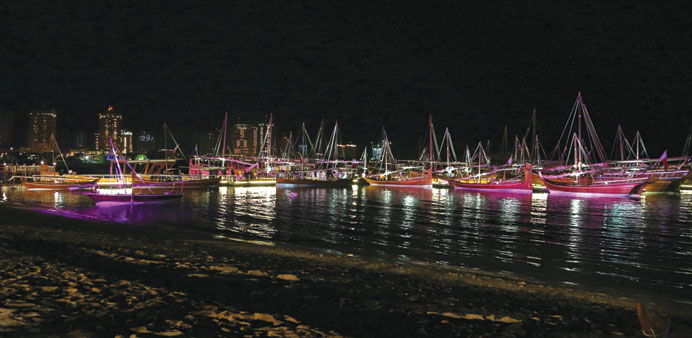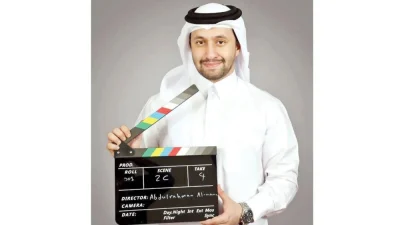The fifth Traditional Dhow Festival at Katara – the Cultural Village is attracting students from various schools in Qatar in addition to residents and tourists.
Students from 15 independent and international schools had the opportunity to have a cruise on board two dhows for 20 minutes yesterday.
The cruise, meant to introduce Qatar’s maritime heritage to students, is an integral part of the folkloric aspect of Qatar and other Arab Gulf states.
“Given that I teach the subject of social science at our school, my students were introduced to the craft of dhow building,” said Rahaf Ahmad, a teacher at Al Muntazah Independent School.
Academic B Supervisor Latifa al-Saddi at Al Wakra Independent School added that secondary school female students were amused by the handicrafts, the pearl and gold markets.
The pearl-diving competition will kick off on today and will continue until Saturday. In the competition, two Saudi teams from Fursan and the Eastern Province will participate along with the other teams from Qatar, Kuwait, Bahrain and Oman (from Sur and Lushkhra).
This year’s festivities include events at the traditional village, handicrafts, and fishing competitions, netting, fishing using cages, rowing and a traditional dhow race.
Some of the trades include Qallaf (builder of boats and ships), Tawash (pearl trader), and making fishing nets and ropes, making Qaraqeer (fishing cages), and As-Sal (ship painting). This is in addition to repair shops that sell everything related to the sea, which reflects a fine artistic taste and rich heritage.
At a ship and boat building (Qallafa) booth of Bakhaar Haji Ahmad from India, visitors can find models of ships and traditional dhows that were built in his workshop which has been operating since 1885.
Workshop manager Hashim Ahmad said that building traditional dhows was the trade of ancestors that had passed on to the grandchildren until it reached him.
Making sailing boats requires special timber such as Saj, coconut, pine and Janky. Building a dhow needs more than a year of work and come in different types such as Al Bateel, Al Bum, Al Baghlah, Ashu’I, Asunbuook. They are used for different purposes of shipping, hunting and cruises, and have different loading capacity.
“For instance, Al Baghlah dhow is used for diving, fishing, and shipping while Asunbuook is widely used in Qatar with a base of 40 to 60ft long, two masts, a big number of paddles, a square-shaped rear with inscriptions and ornaments. It is mainly used for pearl diving and fishing,” he explained.
The Al Ghaithi booth from the Sultanate of Oman shows how fishing nets are made – a traditional handicraft that is related to the Gulf maritime heritage which requires skills and high professionalism.
“My workshop creates different types of fishing nets. Size and raw material differ according to the fish being targeted,” fishing net workshop manager Saleh bin Rashed al-Ghaithi said.
“For instance, big nets are used for fishing Kingfish, medium are used for Bony Bream, small nets are used for Khabbat fish, and huge nets are used for sharks,” he added.
Al-Ghaithi noted that fishing nets are made from strong cotton and nylon threads woven by highly skilled people.

Dhows which have arrived for the festival serve as Katara’s attractions at night.


